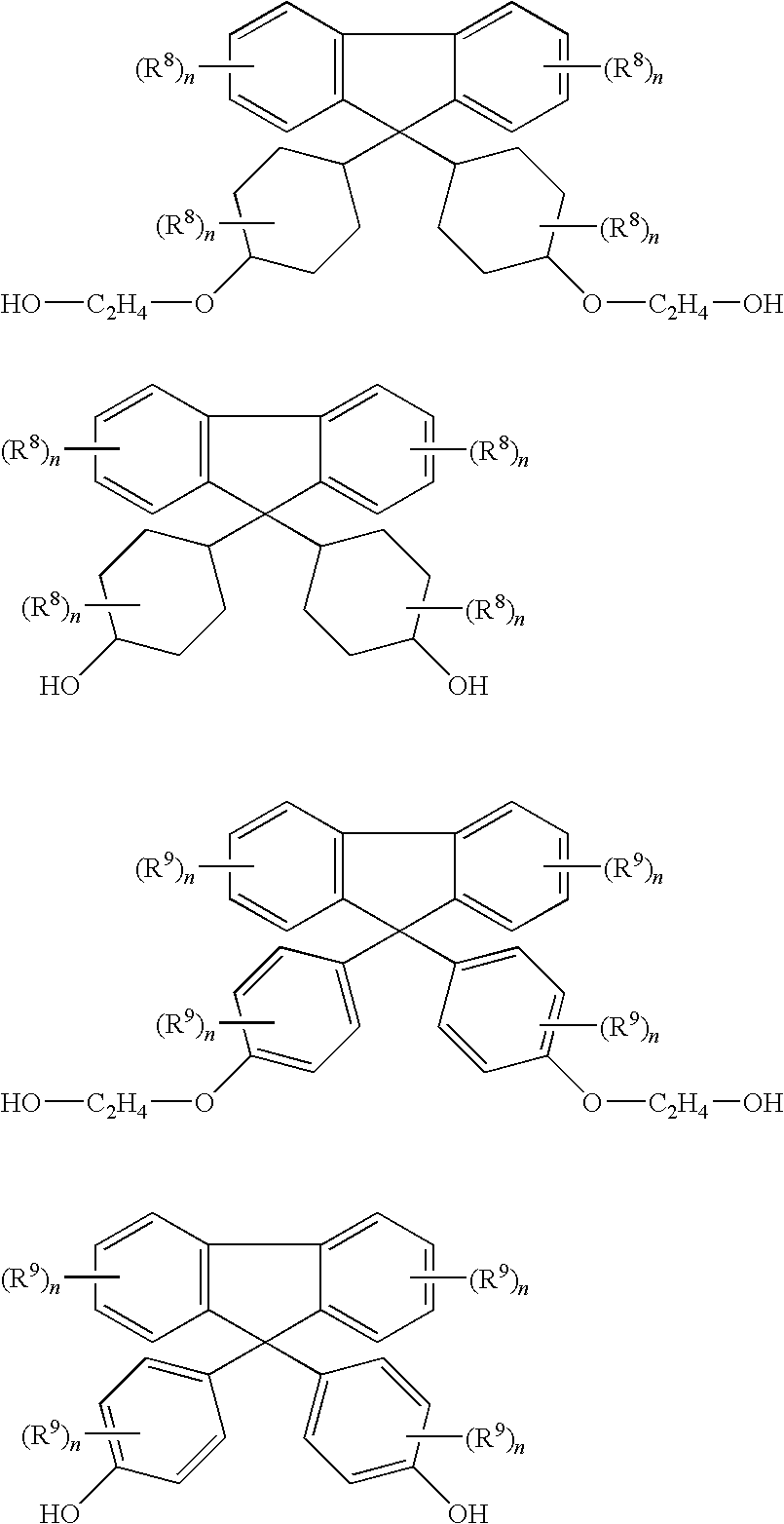Retardation film and polyester resin for optical use
- Summary
- Abstract
- Description
- Claims
- Application Information
AI Technical Summary
Benefits of technology
Problems solved by technology
Method used
Image
Examples
reference example 1
Preparation of Titanium Catalyst (Titanium Sodium Lactate Chelate Compound)
[0156]An lactic acid (226.8 g, 2.52 mol) was dissolved in hot water (371 g) in a three liter flask equipped with a stirrer, a condenser and a thermometer, and the resulting solution was stirred. To the solution being stirred, titanium tetraisopropoxide (288 g, 1.0 mol) was gradually added through a dropping funnel. The resulting mixture was heated and refluxed for 1 hour to produce a hazy solution, and from this hazy solution, a mixture of isopropanol and water was distilled off under a reduced pressure. The resulting product was cooled below 70° C., and to the solution being stirred, a 32% by weight aqueous solution of sodium hydroxide (380 g, 3.04 mol) was gradually added through a dropping funnel. The resulting product was filtrated and then it was mixed with ethylene glycol (504 g, 8 mol), and isopropanol and water were removed by heating under a reduced pressure to obtain a product (titanium content 5.6%...
example 1
[0157]With respect to 1 mole of 1,4-cyclohexanedicarboxylic acid dimethyl ester, 0.4 moles of 9,9-bis(4-hydroxyethoxyphenyl)fluorine and 2.2 moles of ethylene glycol were used as raw materials, and 0.0005 moles of calcium acetate and 0.00004 moles of manganese acetate were used as catalysts, and these substances were charged into a reaction bath. The resulting mixture was gradually heated from 190° C. to 245° C. according to a normal method while stirring the mixture to perform a transesterification reaction. After a predetermined amount of methanol was drawn-out of a system, 0.0012 moles of germanium oxide being a polymerization catalyst and 0.0015 moles of trimethyl phosphate for preventing coloring were charged, and raising of a temperature and reducing of a pressure of the resulting mixture were gradually performed to bring a heating bath into a temperature of 290° C. and a degree of vacuum of 1 torr or less while discharging the produced ethylene glycol out of a system. These c...
examples 2 to 30
, Comparative Examples 1 to 8
[0159]Each film was obtained in the same manner as in Example 1 except for changing raw material composition.
[0160]The results of measurements are shown in Table 1.
[0161]In addition, structures of the raw materials used in each Example and Comparative Example are as follows.
[0162]A: BBAF dimethyl ester (BBAF produced by JFE Chemical Corp. was esterified)
[0163]B: Dimethyl 1,4-cyclohexanedicarboxylate (produced by Wako Pure Chemical Industries, Ltd.)
[0164]Ba: A ratio of a cis form to a trans form (weight ratio) is 70 / 30
[0165]Bb: A ratio of a cis form to a trans form (weight ratio) is 30 / 70
[0166]C: Dimethyl 2,6-decalindicarboxylate (produced by MITSUBISHI GAS CHEMICAL Co., Inc.)
[0167]D: Dimethyl terephthalate (produced by Wako Pure Chemical Industries, Ltd.)
[0168]E: 1,2,3,6-tetrahydrophthalic acid (produced by Tokyo Chemical Industrial Co., Ltd.)
[0169]F: BPEF (produced by JFE Chemical Corp.)
[0170]G: Spiro glycol (produced by JAPAN HYDRAZINE Co., Inc.)
[0171]...
PUM
| Property | Measurement | Unit |
|---|---|---|
| Temperature | aaaaa | aaaaa |
| Temperature | aaaaa | aaaaa |
| Length | aaaaa | aaaaa |
Abstract
Description
Claims
Application Information
 Login to View More
Login to View More - R&D Engineer
- R&D Manager
- IP Professional
- Industry Leading Data Capabilities
- Powerful AI technology
- Patent DNA Extraction
Browse by: Latest US Patents, China's latest patents, Technical Efficacy Thesaurus, Application Domain, Technology Topic, Popular Technical Reports.
© 2024 PatSnap. All rights reserved.Legal|Privacy policy|Modern Slavery Act Transparency Statement|Sitemap|About US| Contact US: help@patsnap.com










